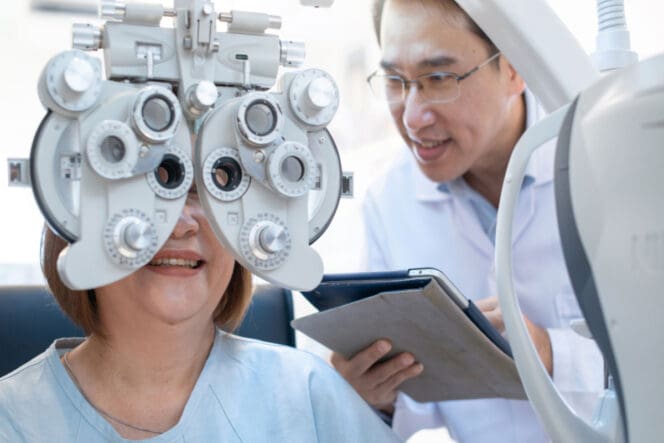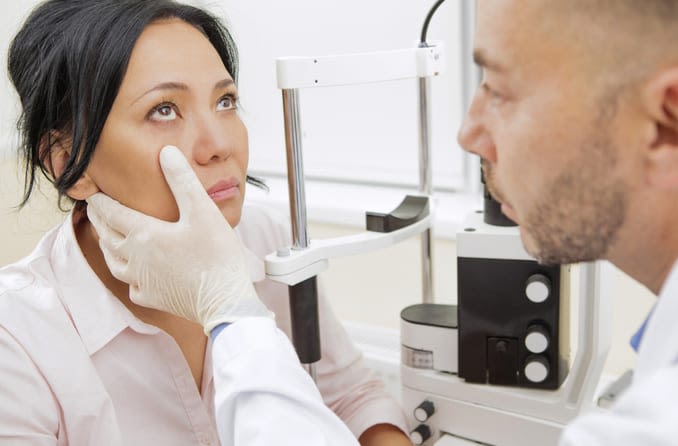Checking Out the most recent Technological Advancements in Optometry and What They Mean for Optometrists
In the ever-evolving area of optometry, recent technical developments are reshaping just how specialists come close to eye care. From the precision of Optical Comprehensibility Tomography to the nuanced understandings used by AI-driven diagnostic tools, these technologies are establishing new criteria in client assessment and treatment. Teleoptometry is poised to redefine availability, making certain that know-how goes beyond geographical limitations. As these developments penetrate the technique, optometrists are confronted with the difficulty of accepting these devices to improve person results. Yet, the question remains: just how will these technical changes redefine the roles and obligations within the occupation?
Developments in Diagnostic Tools
Advancing the field of optometry, advancements in diagnostic tools have changed the method eye care specialists examine and identify ocular problems and visual disabilities. The previous decade has actually experienced substantial technical improvements, allowing more precise and extensive assessments.
One more key innovation is the introduction of advanced corneal topography systems, which map the surface curvature of the cornea with accuracy. These devices are especially beneficial for fitting call lenses and diagnosing corneal conditions. Furthermore, electronic retinal imaging has changed typical ophthalmoscopy, providing comprehensive, breathtaking sights of the retina that help with complete visual exams.
The growth of wavefront aberrometry has actually also been essential, allowing the analysis of refractive errors with unrivaled accuracy (Opticore Optometry). This innovation helps in tailoring rehabilitative lenses and boosting surgical outcomes for refractive surgical treatments. Collectively, these diagnostic developments equip optometrists to provide premium client care, making certain very early treatment and customized therapy methods, ultimately improving aesthetic wellness outcomes
AI in Person Monitoring
Structure on the foundation of cutting-edge analysis tools, the unification of synthetic knowledge (AI) in person management stands for a transformative leap for optometry. AI systems are significantly utilized to boost effectiveness, precision, and personalization in individual treatment.
Moreover, AI-driven systems help with streamlined person interactions and management processes. Automated organizing, virtual examinations, and personalized follow-up strategies not only enhance person fulfillment however additionally optimize time management for experts. These systems can triage individuals based upon the urgency of their problems, ensuring that those in essential need get timely focus.
Additionally, AI improves decision-making by giving eye doctors with evidence-based recommendations and treatment paths. By integrating information from electronic health and wellness documents, AI devices offer insights that notify scientific choices, reducing the risk of mistakes and boosting client end results. As AI proceeds to progress, its duty in patient monitoring will likely broaden, reshaping the landscape of optometric treatment.
Advances in Retinal Imaging
In the world of optometry, retinal imaging has witnessed impressive technical improvements that are enhancing diagnostic capacities and client care. Developments such as Optical Coherence Tomography (OCT) and fundus digital photography have transformed how optometrists envision and analyze the retina.
Boosted imaging techniques like OCT angiography are additional refining analysis precision. This non-invasive strategy maps blood flow in the retina, providing critical understandings into vascular health and wellness without the need for color injections. In addition, adaptive optics technology is being incorporated right into retinal imaging systems to fix ocular aberrations, providing unprecedented picture quality. Such improvements facilitate the identification of min retinal modifications that could signify illness progression.
In addition, developments in expert system are boosting retinal imaging by making it possible for automatic analysis of large datasets. These systems aid eye doctors in identifying patterns a sign of pathology, consequently enhancing diagnostic accuracy and effectiveness. Jointly, these developments are transforming retinal imaging right into a keystone of modern-day eye care, enhancing end results and expanding therapeutic opportunities.
Teleoptometry's Growing Role
Teleoptometry is progressively ending up being an essential part of eye care, driven by advancements in digital interaction and diagnostic devices. This is particularly useful in underserved and rural areas where access to specialized eye treatment is commonly restricted.
The combination of artificial knowledge (AI) more enhances teleoptometry, allowing the evaluation of aesthetic data and aiding in the discovery of ocular conditions such as glaucoma and diabetic person retinopathy. AI-powered formulas can swiftly translate complicated imaging information, supplying optometrists with beneficial insights that bolster professional decision-making.
Additionally, teleoptometry sustains continuity of treatment via smooth assimilation with electronic health and wellness documents (EHRs), enabling like it eye doctors to maintain comprehensive person backgrounds. When seeking advice from with different practitioners., this makes sure that patients receive constant and personalized treatment even.
In spite of these advantages, obstacles continue to be, including ensuring data protection and managing individual expectations. Nevertheless, teleoptometry represents a considerable stride in the direction of even more accessible, effective, and patient-centered eye care. As technology evolves, its function is poised to increase further.

Future Patterns in Eye Treatment
A myriad of ingenious patterns is established to improve the future of eye treatment, driven by technical innovations and the developing demands of clients. One considerable trend is the assimilation of expert system (AI) in diagnostics, which promises to improve the accuracy and effectiveness of eye examinations. AI formulas can assess huge amounts of data from retinal images, possibly discovering conditions like diabetic person retinopathy and glaucoma earlier than traditional methods.
Moreover, customized medication is acquiring traction in optometry, with genetic screening notifying tailored treatment plans. This approach intends to maximize client outcomes by tailoring interventions to private hereditary profiles. Wearable innovation, such as clever call lenses, is also on the horizon, supplying real-time tracking of intraocular pressure or sugar levels, thus giving continual insights into eye and systemic health and wellness.
The adoption of anchor enhanced fact (AR) and digital reality (VIRTUAL REALITY) in training and person education and learning is an additional emerging pattern. These modern technologies helpful resources supply immersive experiences that can improve understanding and skills both for clients and optometrists. As these patterns evolve, optometrists have to remain abreast of technical developments to give innovative care, ensuring better individual results and fulfillment in the vibrant landscape of eye care.
Final Thought
Jointly, these analysis innovations encourage eye doctors to deliver premium individual care, guaranteeing very early treatment and customized treatment techniques, ultimately improving visual wellness outcomes.

As these technologies proceed to progress, optometrists should adjust and integrate them into practice, inevitably maximizing workflow performance and raising the standard of eye care supplied to patients.